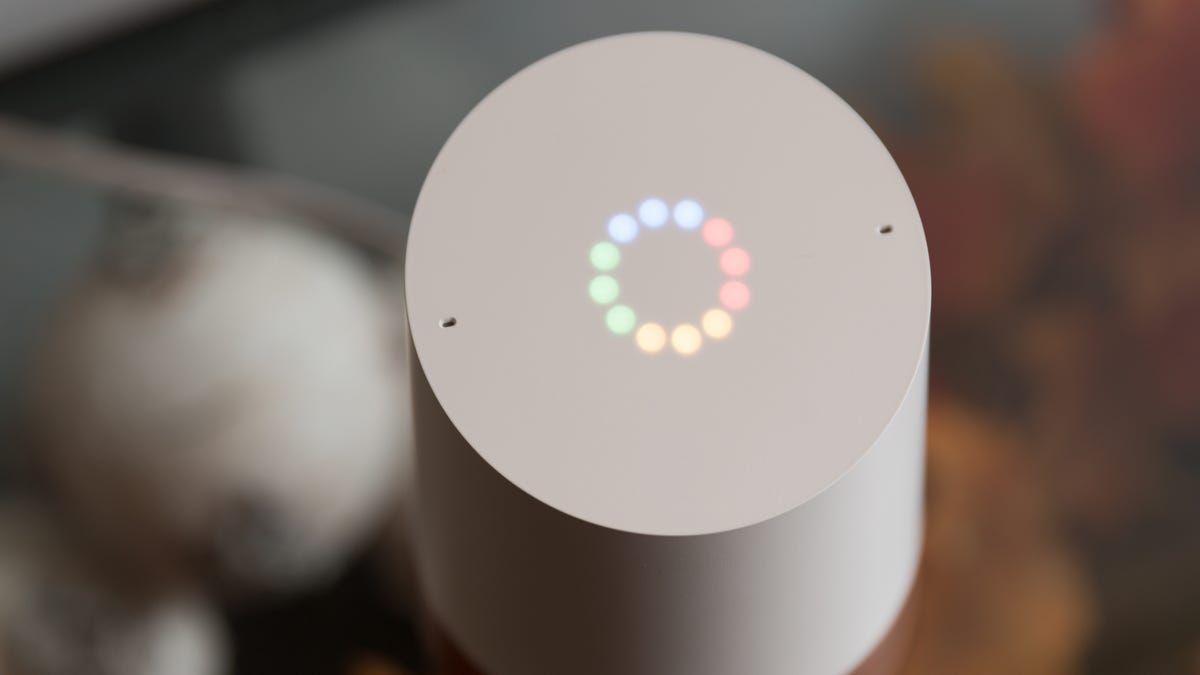Google preps its smart home system for expansion
More smart home devices will be able to speak Google's language soon, which hopefully means Google Home will expand its functionality as well.

Slowly but surely, Google is staking its claim on the smart home. After taking a big step with the Google Home voice assistant speaker, its latest move will fit more types of connected devices under its smart home umbrella.
Google will expand and improve the Weave smart home platform over the coming months, the company announced via its developer blog today. Plus it's rolling out a developer preview of Android Things today -- allowing developers to easily build devices with a simple Android operating system.
Weave is essentially a language for smart home devices. It allows your thermostat to talk to your lights, and both of those devices to send info to the cloud and your phone. Google first announced Weave back in 2015. Since then, the company's expanded the software to work with Google Assistant -- its voice-activated personal assistant, similar to Apple's Siri.
Then, last month the company rolled out Google Home -- an always-listening speaker like the Amazon Echo. Say, "OK Google, turn off the lights," and Google Home will hear you, and the built-in Assistant will follow your command if you have compatible, connected light bulbs.
A bigger and better smart home
If Weave's better, will that make Google Home better?
Now, Google's expanding what Weave can do, which will hopefully result in more smart home capabilities for the Google Home. Right now, Weave only talks to light bulbs, smart plugs, switches and thermostats. Google's blog promises to support more device types, although it doesn't specify if those what kinds of devices they might be.
The blog also lists several big smart home companies that will be adopting Weave in the near future: Belkin WeMo, LiFX, Honeywell, Wink, TP-Link and First Alert.
I liked Google Home when I reviewed it last month, but it lags behind the Amazon Echo in terms of what it can control in the smart home. Right now, Home only works with Philips Hue, SmartThings, Nest and IFTTT. That's not enough for Home to compete.
Opening the door for developers
The Android Things developer kit is also promising -- part of the reason for the Echo's success is its open relationship with developers, and the dev kit seems on track to do the same for Google's smart home. Android Things replaces Brillo -- a similar way to build Android into smart home devices that was announced along with Weave. Devices built with Android Things will automatically receive updates from Google, and will also work with Weave so as to communicate with the rest of your smart home.
In addition to Android Things, Google's doing its best to open the doors of its smart home to developers. Last week, the company introduced tools allowing developers to work with Google Assistant.
Connecting the dots
Thankfully, this latest batch of updates will bring Google and Nest closer together. Weirdly, even though Alphabet, Google's parent company, also owns Nest -- the smart home company behind the Nest Learning Thermostat -- they each have a similar but different smart home language, and both languages were called Weave. Finally, in an overdue move, the two Weaves will come together and hopefully tie the expansive Works with Nest product catalog together with the Google Assistant.
We don't know for sure yet if this announcement means Google Home will come closer to reaching its potential, but Google seems to be making the right moves by expanding and clarifying Weave, and reaching out to developers with Android Things. I'll be keeping my fingers crossed these announcements lead to tangible changes for Google Assistant and Google Home soon.

